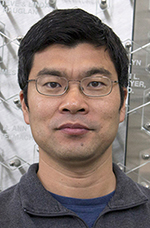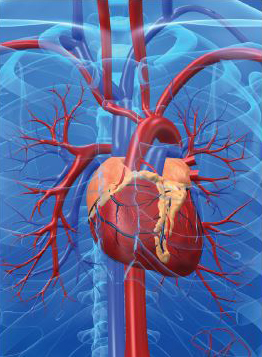
Discovery to promise
Chemist “tuning up” potential new therapeutic for world’s deadliest disease
The 2003 discovery of PCSK9 – a protein with a clunky name and unknown function – would solve a genetic mystery on two continents.
In Paris, a group of researchers was tracking families suffering from abnormally high cholesterol. Around the same time in Dallas, scientists were astounded by a handful of cases registering extraordinarily low levels. In both instances, genetic sequencing quickly homed in on PCSK9.
The correlation sparked a gold rush in the pharmaceutical world.
Within nine years the first antibodies entered clinical trials. By 2015, two new drugs for treating cardiovascular disease were on the market.
It was translational medicine at warp speed, a discovery-to-product surge perhaps unmatched in the modern genomic era. And the story is far from over.
What makes Proprotein Convertase Subtilisin/Kexin type 9 the most exciting frontier in heart health since the invention of statins?
In his office in the pharmacy school, Weiping Tang gives a bold answer: targeting PCSK9 is a game changer in how we think about and combat cardiovascular diseases, the number one cause of death globally.

Cardiovascular diseases, caused by LDL (“bad”) cholesterol building up as plaque and clogging arteries, kill more than 17 million people every year. And they’re a multibillion dollar scourge.
“Lowering cholesterol has the highest market share among all pharmaceuticals,” says Tang.
Sales of Lipitor alone topped $13 billion annually before it went off patent.
Statins (like Lipitor) are the blockbuster therapy of choice. However, approximately one in five patients cannot achieve the desired results due to side effects. For these patients, an alternative is needed.
That’s where PCSK9 comes in.
To understand how, Tang describes the process by which our bodies regulate cholesterol:
When LDL cholesterol travels through the bloodstream, receptors on the surface of liver cells catch the particles, haul them inside and degrade them. A job well done, the receptors then return to the surface of the cell to look for more interlopers.
The same cells secrete PCSK9 protein to bind to the receptors and act as a sort of referee. The problem is that PCSK9 can end up degrading the receptors themselves. The result is dead receptors, and cholesterol getting a free pass.
The process is a big red bullseye for pharmaceutical intervention.
But the drugs that sped to market so quickly following the 2003 discovery are antibodies, and antibodies have drawbacks.
“They require injection which is not ideal, and in some patients there are undesired immune effects because these are biological drugs,” says Tang.
His team of multidisciplinary collaborators (most notably, biochemist and lipids expert Alan Attie) are taking a different approach. Through their collective efforts, the team has been able to identify several small molecule secretion inhibitors that appear highly promising.
The inhibitors are inspired by a class of compounds called indoles that are naturally occurring (e.g., serotonin and tryptophan) and used widely in pharmaceuticals. Indoles and their derivatives are found in drugs for treating everything from cancer and schizophrenia to HIV and asthma.
With support from the WARF Accelerator Program, the team is fine-tuning the pharmacological properties of these small molecules for in vivo studies. Tang says this phenotype-based strategy is the most successful approach for developing first-in-class drugs.
He has reason for optimism. At this stage, the in vitro results are dramatic.
The project now faces a critical juncture. Tang, a Stanford- and Harvard-educated synthetic chemist, is currently “tuning up the soft spots” in the molecules, optimizing their structures to make them more potent, soluble and metabolically stable before proceeding in vivo.
He says support from the Accelerator Program has been essential to moving the project forward. Pharmaceutical development is a marathon not a sprint, and he knows that he’ll need years more data before broaching industry.
“The more work you put in at the beginning,” he says, “the higher chance that the pharmaceutical company will take the licensed compound into clinic.”
He also values the technical insights provided by Brad Henke, who recently joined the Accelerator Program as a biopharma Catalyst. Henke directed chemistry at GlaxoSmithKline for years and led research teams that produced 10 clinical drug candidates.
Tang says they “share a common language.”
Approaching his tenth year at UW-Madison, Tang is uniquely qualified to lead the project. He is co-director of the new UW Medicinal Chemistry Center, launched last summer. The center’s mission is to design and synthesize the drugs of tomorrow by collaborating with UW-Madison biomedical researchers.
Current projects include new therapeutics for treating diabetes, breast cancer, metabolic disorders and autoimmune diseases.
With a cool and confident demeanor, Tang carries the heavy mantle of his work in stride. But a stunning quote on the bottom of his slide deck seems to reveal his inner thoughts. It comes from science writer Stephen Hall, writing in the journal Nature:
“Of all the intriguing DNA sequences spat out by the Human Genome Project and its ancillary studies, perhaps none is a more promising candidate to have a rapid, largescale impact on human health than PCSK9.”